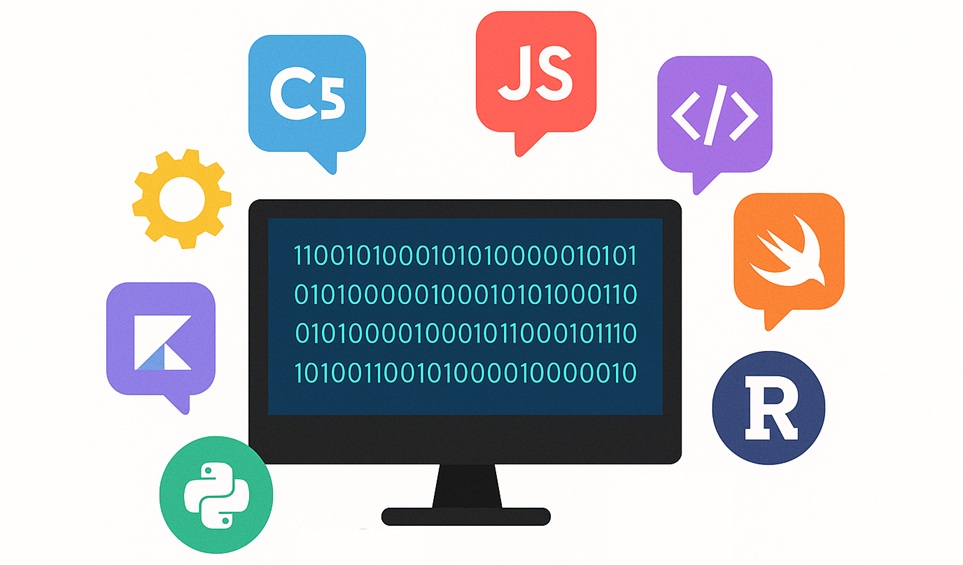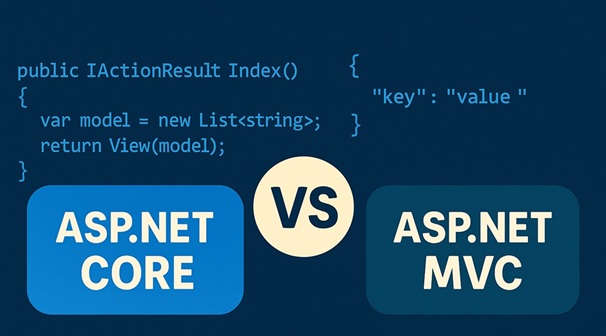Introduction
In the last five years, automated machine learning (AutoML) has moved from research labs into everyday business workflows. Companies that once needed teams of data scientists to build and optimize models can now experiment with ready-to-use AutoML tools. Instead of manually selecting algorithms, adjusting hyperparameters, or rewriting pipelines, teams can lean on frameworks that automate these steps while keeping enough flexibility to customize.
For teams like TwinCore, which build and deploy enterprise software, the rise of AutoML is not just a technical trend. It changes how product teams think about predictive features, customer analytics, and operational efficiency. To understand why, we first need to answer a simple question: what is AutoML?
What is AutoML?
At its core, AutoML refers to techniques and platforms that automate parts of the machine learning workflow. Traditionally, creating a model required:
- Cleaning and preparing data,
- Selecting the right algorithm,
- Tuning hyperparameters,
- Validating and deploying the model.
Each step could take days or weeks. AutoML frameworks accelerate this process by automatically trying multiple algorithms, searching through parameter combinations, and ranking results by performance metrics. The outcome is a model that can compete with one built manually, but in a fraction of the time.
It’s important to note that AutoML does not remove the need for human expertise. Instead, it reduces repetitive work so data scientists can focus on domain knowledge and problem framing. This distinction is often overlooked in hype-driven blog posts, but in practice, the best results come from combining automation with informed oversight.
Why Businesses Turn to AutoML
The value proposition of AutoML is straightforward: faster results, lower cost, and wider adoption. Companies that lack deep machine learning expertise can still apply predictive analytics to problems like customer churn, fraud detection, or logistics optimization.
Three factors stand out:
- Time savings. Running an AutoML pipeline can shrink experimentation cycles from weeks to hours.
- Accessibility. Developers with a background in Python but limited ML training can start using AutoML Python libraries without needing a PhD.
- Consistency. Automated workflows reduce the risk of human error in repetitive tasks, making outcomes more reproducible.
For a logistics platform, for example, AutoML could help generate better demand forecasts by letting the system test dozens of time-series models overnight. For a fintech product, it could optimize fraud detection thresholds without constant manual tuning.
AutoML Tools and Frameworks
There’s no shortage of frameworks in the AutoML space. Some are commercial platforms, others are open-source projects. Each has its strengths, trade-offs, and community support. A quick look at leading options shows the diversity of the ecosystem:
Google AutoML
Google’s cloud-based suite allows teams to build models for vision, natural language, and structured data without deep ML expertise. It integrates tightly with the rest of Google Cloud, which is attractive for enterprises already on that stack.
H2O.ai
H2O is an open-source project with a commercial enterprise version. It’s known for scalability and strong support for classification, regression, and time-series forecasting.
Auto-sklearn
Built on top of scikit-learn, Auto-sklearn is a go-to option for Python developers. It uses Bayesian optimization and meta-learning to select algorithms and hyperparameters efficiently.
TPOT
TPOT applies genetic programming to automate feature engineering and model selection. While slower than some competitors, it often uncovers non-obvious pipelines that outperform defaults.
PyCaret
Designed with simplicity in mind, PyCaret wraps many ML models in a unified API. It’s particularly popular for rapid prototyping and teaching.
MLBox
Less mainstream than others, MLBox provides strong automation for preprocessing, hyperparameter optimization, and model stacking.
These frameworks illustrate that AutoML Python tools aren’t one-size-fits-all. The right choice depends on whether a company prioritizes scalability, interpretability, or ease of use.
How AutoML Works in Python
Python has become the natural home for AutoML. Most libraries - auto-sklearn, PyCaret, TPOT - are Python-based, taking advantage of the ecosystem’s maturity. Developers familiar with pandas, NumPy, and scikit-learn can integrate AutoML frameworks into existing pipelines with minimal friction.
A typical workflow might look like this:
- Load and preprocess data using pandas.
- Pass the dataset into an AutoML function, specifying task type (classification, regression, etc.).
- Let the framework test multiple algorithms (e.g., XGBoost, LightGBM, Random Forest).
- Review ranked results, then export the best model.
What stands out here is not just the automation, but also the ability to bridge skill gaps. A developer with strong Python but limited ML background can still experiment with models that once required senior data science expertise. At the same time, advanced users can override defaults, inject domain knowledge, or chain AutoML outputs into custom MLOps pipelines.
Limitations of AutoML
Despite its strengths, AutoML is not magic. Several limitations surface in practice:
- Interpretability. Automated pipelines often produce black-box models. For regulated industries, this lack of transparency can be a problem.
- Niche use cases. AutoML excels on structured datasets and common tasks, but unusual data types or domain-specific constraints still need experts.
- Compute cost. Some frameworks test hundreds of combinations, which can be expensive in cloud environments.
Acknowledging these gaps is essential for building trust. Businesses that treat AutoML as a replacement for data science usually end up disappointed. The better approach is to use it as an accelerator while keeping expert review in the loop.
AutoML in Practice for Businesses
The conversation around automated machine learning often gets stuck in technicalities. What matters more is how companies actually apply it. Across industries, three adoption patterns stand out.
1. Rapid Prototyping
Startups and mid-size companies frequently use AutoML tools to test product ideas before committing resources. Instead of hiring a team of specialists, a product engineer with Python knowledge can run AutoML Python libraries like PyCaret or auto-sklearn to see if predictive signals exist in their data.
For instance, a SaaS startup offering HR analytics might test whether employee attrition can be predicted from internal metrics. Even if the model isn’t perfect, AutoML provides a signal: is this worth deeper investment?
2. Operational Optimization
Enterprises deploy AutoML in day-to-day operations where small efficiency gains add up. Logistics platforms use it to optimize routes, demand forecasts, and warehouse allocation. E-commerce players run AutoML experiments on recommendation systems. In fintech, automated workflows accelerate fraud detection without weeks of manual feature tuning.
The appeal here is scale. Once embedded in operations, AutoML pipelines quietly improve outcomes without constant attention.
3. Democratization of Data Science
Not every company can attract or afford top-tier data scientists. AutoML lowers the barrier so “citizen developers” and business analysts can explore ML without deep theory. They still need guardrails, but the productivity boost is undeniable.
TwinCore’s Case Examples
For TwinCore’s target audience - logistics companies and enterprises balancing efficiency with innovation - AutoML offers a path to smarter decision-making. Predictive maintenance, fleet optimization, and dynamic pricing are all areas where automated experimentation pays off.
By integrating AutoML frameworks into TMS (Transportation Management System) or ERP solutions, TwinCore can:
- Provide clients with out-of-the-box predictive features,
- Shorten delivery cycles for custom analytics modules,
- Keep ML experimentation costs under control.
This is not about replacing existing data teams but equipping them with accelerators. A logistics manager might not care whether the backend uses TPOT or H2O.ai, but they will notice when late deliveries drop 5% after AutoML-based forecasting is applied.
Best Practices for Adopting AutoML
Companies often stumble when they assume AutoML means “no expertise required.” In reality, successful projects balance automation with process discipline. Key practices include:
- Define the business question first. AutoML excels when the target variable is clear (e.g., churn, demand, delivery time).
- Validate results with domain knowledge. Even the best automated pipeline can misinterpret data quirks.
- Budget for compute. Running dozens of model trials can be expensive in the cloud.
- Plan for explainability. Especially in regulated sectors, you may need interpretable models or at least a documented process.
With these practices, AutoML becomes a reliable asset rather than a gimmick.
The Future of Automated Machine Learning
The next phase of AutoML is already unfolding. Three trends deserve attention:
1. Deeper Integration with MLOps
Today’s AutoML often stops at model selection. Tomorrow’s frameworks will handle deployment, monitoring, and retraining automatically. For enterprises, this means not just faster experiments but also sustainable production pipelines.
2. Hybrid Workflows with LLMs
Large language models (LLMs) complement structured AutoML systems. While AutoML optimizes tabular data tasks, LLMs enable text, code, and multimodal use cases. We’re starting to see integrations where an LLM generates features that an AutoML pipeline then validates and deploys.
3. Focus on Interpretability
The black-box critique won’t go away. Researchers and vendors are building AutoML frameworks that emphasize transparency - feature importance, counterfactual explanations, and visual dashboards. Businesses adopting these tools gain both accuracy and trust.
Why AutoML Matters Now
It’s easy to dismiss AutoML as “just another trend,” but that misses the point. The technology is less about novelty and more about leverage. By automating repetitive experimentation, companies can allocate talent where it matters: strategy, domain expertise, and customer insight.
For TwinCore, that’s the competitive angle. Competitors may build logistic software that digitizes workflows. TwinCore can go further - embedding AutoML so clients not only digitize but also optimize with predictive intelligence. In a sector where margins are tight, that difference is not cosmetic. It’s strategic.
Conclusion
AutoML is not magic, but it is practical. It saves time, broadens access to machine learning, and lets businesses turn data into action faster. Tools like H2O.ai, Auto-sklearn, PyCaret, and Google AutoML each play a role depending on context. Python remains the common thread, making it the natural platform for adoption.
Limitations remain - interpretability, cost, and domain-specific complexity - but they don’t erase the benefits. For enterprises navigating logistics, fintech, or SaaS markets, AutoML represents a way to experiment quickly, scale responsibly, and stay competitive.
As the ecosystem matures, companies that combine automation with genuine expertise will set the pace. TwinCore, positioned at the intersection of enterprise software and applied AI, can lead that shift by embedding AutoML into solutions where it creates measurable value.

 LinkedIn
LinkedIn
 Twitter
Twitter
 Facebook
Facebook
 Youtube
Youtube







